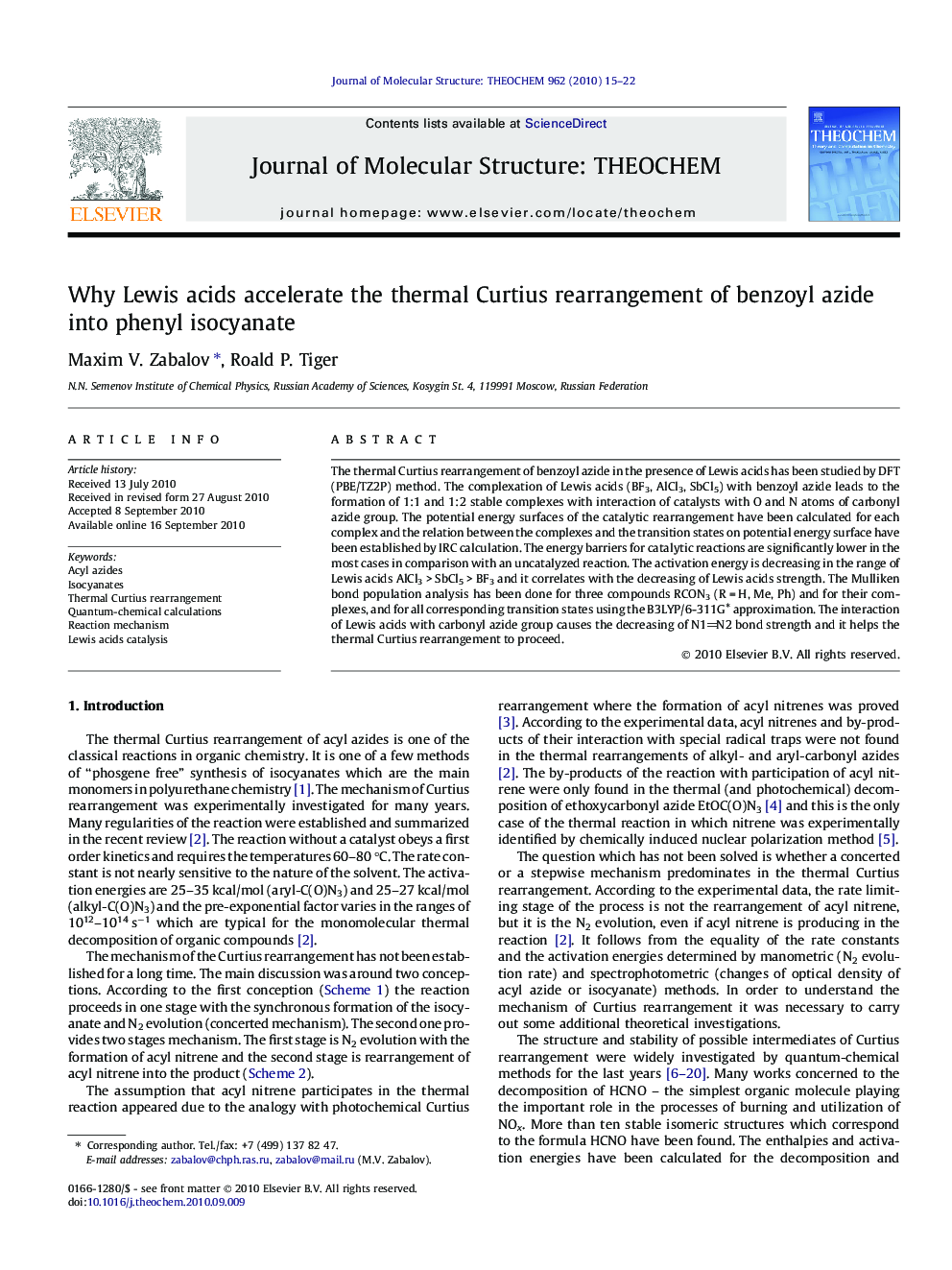| Article ID | Journal | Published Year | Pages | File Type |
|---|---|---|---|---|
| 5416258 | Journal of Molecular Structure: THEOCHEM | 2010 | 8 Pages |
Abstract
The thermal Curtius rearrangement of benzoyl azide in the presence of Lewis acids has been studied by DFT (PBE/TZ2P) method. The complexation of Lewis acids (BF3, AlCl3, SbCl5) with benzoyl azide leads to the formation of 1:1 and 1:2 stable complexes with interaction of catalysts with O and N atoms of carbonyl azide group. The potential energy surfaces of the catalytic rearrangement have been calculated for each complex and the relation between the complexes and the transition states on potential energy surface have been established by IRC calculation. The energy barriers for catalytic reactions are significantly lower in the most cases in comparison with an uncatalyzed reaction. The activation energy is decreasing in the range of Lewis acids AlCl3Â >Â SbCl5Â >Â BF3 and it correlates with the decreasing of Lewis acids strength. The Mulliken bond population analysis has been done for three compounds RCON3 (RÂ =Â H, Me, Ph) and for their complexes, and for all corresponding transition states using the B3LYP/6-311Gâ approximation. The interaction of Lewis acids with carbonyl azide group causes the decreasing of N1N2 bond strength and it helps the thermal Curtius rearrangement to proceed.
Related Topics
Physical Sciences and Engineering
Chemistry
Physical and Theoretical Chemistry
Authors
Maxim V. Zabalov, Roald P. Tiger,
